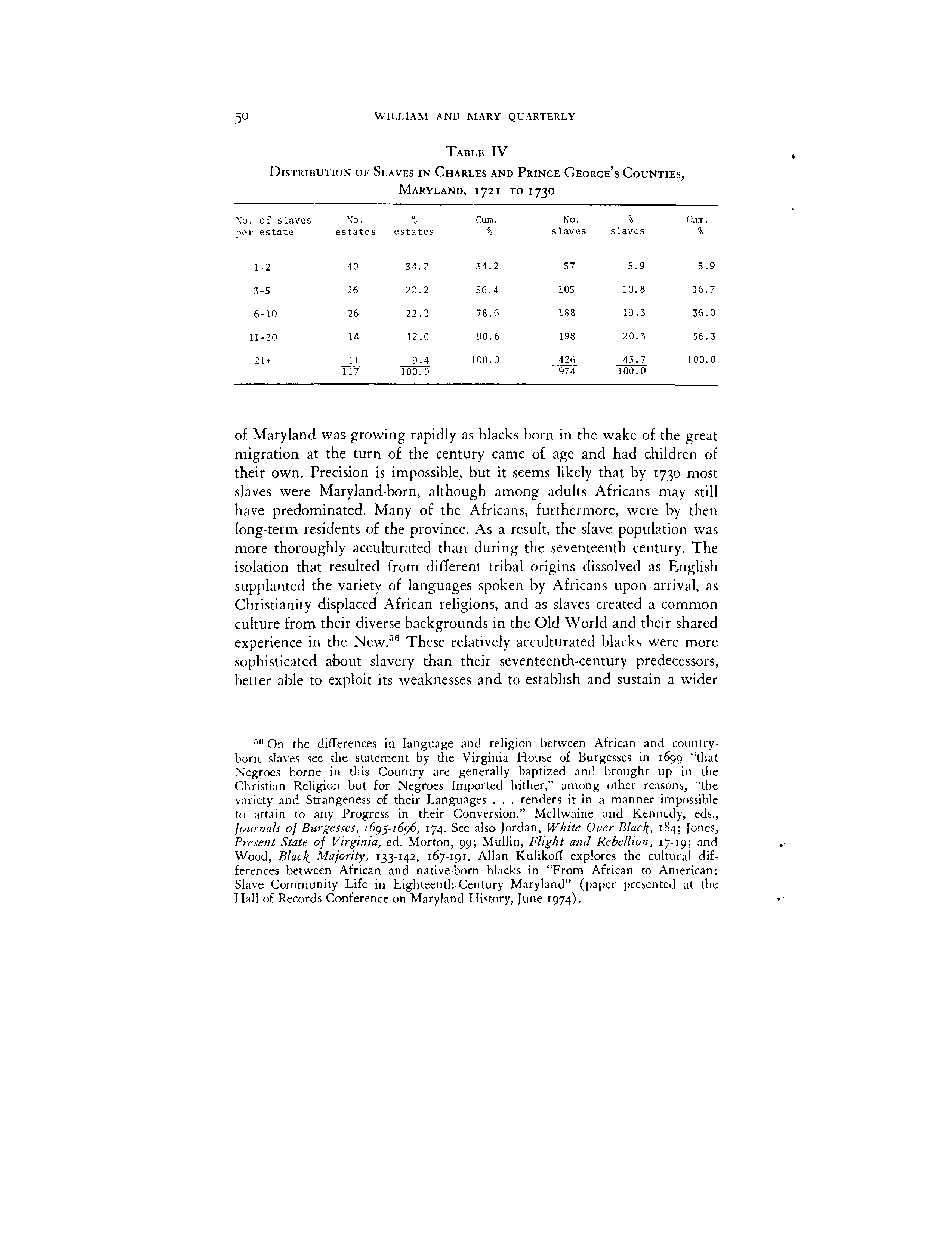|
50 WILLIAM AND MARY QUARTERLY
TABLE IV
DISTRIBUTION OF SLAVES IN CHARLES AND PRINCE GEORGE'S COUNTIES,
MARYLAND, 1721 TO 1730
N'o. of slaves No. % Cum. Mo.
per estate estates estates % slaves
1-2
40
34.
2
34.
2
57
5.
9
5.
,9
3-5
26
22.
2
56.
4
105
10.8
16.
7
6-10
26
22,
,2
78.
6
188
19
.3
36,
.0
11-20
14
12
.0
90.
.6
198
20,
.3
56,
,3
21 +
11
9
.4
100.
0
426
43
.7
100,
,0
117
100.
,0
974
100
.0
of Maryland was growing rapidly as blacks born in the wake of the great
migration at the turn of the century came of age and had children of
their own. Precision is impossible, but it seems likely that by 1730 most
slaves were Maryland-born, although among adults Africans may still
have predominated. Many of the Africans, furthermore, were by then
long-term residents of the province. As a result, the slave population was
more thoroughly acculturated than during the seventeenth century. The
isolation that resulted from different tribal origins dissolved as English
supplanted the variety of languages spoken by Africans upon arrival, as
Christianity displaced African religions, and as slaves created a common
culture from their diverse backgrounds in the Old World and their shared
experience in the New.5" These relatively acculturated blacks were more
sophisticated about slavery than their seventeenth-century predecessors,
better able to exploit its weaknesses and to establish and sustain a wider
50 On the differences in language and religion between African and country-
born slaves see the statement by the Virginia House of Burgesses in 1699 "that
Negroes borne in this Country are generally baptized and brought up in the
Christian Religion but for Negroes Imported hither," among other reasons, "the
variety and Strangeness of their Languages . . . renders it in a manner impossible
to attain to any Progress in their Conversion." Mcllwaine and Kennedy, eds.,
Journals of Burgesses, 7695-7696, 174. See also Jordan, White Over Blacl^, 184; Jones,
Present State of Virginia, ed. Morton, 99; Mullin, Flight and Rebellion, 17-19; and
Wood, Blacl^ Majority, 133-142, 167-191. Allan Kulikoff explores the cultural dif-
ferences between African and native-born blacks in "From African to American:
Slave Community Life in Eighteenth-Century Maryland" (paper presented at the
Hall of Records Conference on Maryland History, June 1974).
�
|

